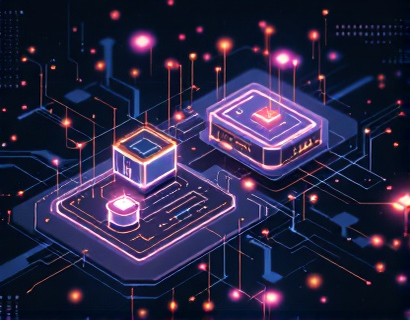Next-Gen Connectivity: Leveraging Advanced Telecom and Internet Solutions for Enhanced Business and Personal Communication
The rapid evolution of telecommunications and internet technologies has revolutionized the way businesses and individuals connect, communicate, and conduct operations in the digital age. The transition from traditional telephony and internet services to advanced, high-speed, and reliable connectivity solutions has become a cornerstone for modern productivity and efficiency. This article delves into the transformative role of cutting-edge telecommunications infrastructure and specialized software solutions, highlighting their critical importance in enhancing connectivity and communication. It underscores the necessity of quality and customer satisfaction in delivering dependable and efficient digital services.
In recent years, the demand for robust and scalable telecommunications networks has surged, driven by the exponential growth of data traffic, the proliferation of IoT devices, and the increasing reliance on cloud services. Advanced telecom infrastructure, including 5G networks, fiber-optic connections, and satellite communications, plays a pivotal role in meeting these demands. These technologies offer unprecedented speeds, low latency, and high capacity, enabling seamless connectivity for a wide range of applications.
Advanced Telecom Infrastructure: The Backbone of Modern Connectivity
5G technology represents a significant leap forward in mobile communications, offering peak data rates up to 20 Gbps and latency as low as 1 millisecond. This performance enhancement supports real-time applications such as autonomous driving, remote surgery, and augmented reality. The deployment of 5G networks requires a dense infrastructure of small cells and base stations, which, when combined with advanced antenna technologies like Massive MIMO, ensures widespread coverage and reliable connections.
Fiber-optic networks, another critical component of next-gen connectivity, provide the high bandwidth and low latency necessary for modern data-intensive applications. Fiber-to-the-home (FTTH) and fiber-to-the-building (FTTB) solutions offer speeds exceeding 1 Gbps, making them ideal for businesses requiring high-performance internet connections. The resilience and security of fiber optics also make it a preferred choice for critical infrastructure and data centers.
Satellite communications, while traditionally limited by latency and bandwidth, have seen significant improvements with the launch of low Earth orbit (LEO) satellite constellations. These constellations, composed of hundreds of small satellites, provide global coverage with low latency, bridging the connectivity gap in remote and underserved areas. This technology is particularly beneficial for industries such as maritime, aviation, and rural telemedicine.
Specialized Software Solutions: Enhancing Connectivity and Communication
Beyond the physical infrastructure, specialized software solutions are essential for optimizing and managing advanced telecom networks. Network management systems (NMS) provide real-time monitoring, analysis, and control of network performance, ensuring optimal resource allocation and quick resolution of issues. These systems leverage artificial intelligence and machine learning to predict and prevent network failures, enhancing overall reliability and user experience.
Cloud-based communication platforms have also become indispensable tools for businesses and individuals. These platforms offer unified communication services, including voice, video, and messaging, all accessible via a single interface. Features such as automatic call distribution, voicemail to email, and integrated collaboration tools streamline workflows and improve productivity. The scalability and flexibility of cloud solutions enable organizations to adapt quickly to changing business needs without the burden of maintaining on-premises infrastructure.
Internet of Things (IoT) platforms play a crucial role in connecting and managing a vast array of devices, from smart home appliances to industrial sensors. These platforms facilitate data collection, analysis, and actionable insights, enabling smarter decision-making and operational efficiency. IoT solutions are particularly transformative in sectors like manufacturing, logistics, and healthcare, where real-time data and automation can lead to significant improvements.
Quality and Customer Satisfaction: Pillars of Reliable Digital Services
The success of advanced telecom and internet solutions hinges on the quality of service and customer satisfaction. High-quality connections are not just about speed and capacity but also about consistency and reliability. Network operators must invest in robust infrastructure and continuous maintenance to ensure that services meet and exceed user expectations. This includes implementing advanced quality of service (QoS) mechanisms to prioritize critical traffic and minimize delays.
Customer satisfaction is equally important, as it directly impacts user retention and business growth. Providers must focus on delivering exceptional customer support, offering transparent pricing, and providing flexible plans that cater to diverse needs. Feedback loops and customer engagement initiatives help identify pain points and areas for improvement, fostering a positive relationship between service providers and their clients.
In the business sector, reliability and security are paramount. Enterprises require secure and compliant networks to protect sensitive data and maintain regulatory compliance. Service providers must offer robust security measures, including encryption, firewalls, and intrusion detection systems, to safeguard against cyber threats. Regular security audits and updates ensure that networks remain resilient against evolving threats.
Enhancing Personal Communication: The Impact of Advanced Connectivity
For individuals, advanced connectivity solutions have transformed personal communication, making it faster, more convenient, and more accessible. High-speed internet enables seamless streaming of videos, music, and games, enriching entertainment experiences. Video conferencing tools have become essential for personal and professional interactions, breaking down geographical barriers and fostering global connections.
Smart home technologies, powered by advanced telecom networks, allow users to control and monitor their homes remotely. From smart thermostats and security systems to voice assistants and automated lighting, these devices enhance convenience and energy efficiency. The integration of IoT in personal devices also facilitates health monitoring and wellness management, contributing to a better quality of life.
The rise of mobile devices and wireless connectivity has made internet access ubiquitous. 5G-enabled smartphones and tablets offer lightning-fast speeds and low latency, enabling on-the-go productivity and entertainment. Augmented reality (AR) and virtual reality (VR) applications, supported by high-bandwidth connections, open new frontiers for gaming, education, and training.
Case Studies: Real-World Applications of Advanced Connectivity
To illustrate the transformative impact of advanced telecom and internet solutions, consider a few real-world applications across different sectors.
In healthcare, telemedicine platforms leveraging 5G and IoT technologies enable remote consultations, monitoring, and even robotic surgeries. This not only improves access to medical services in remote areas but also enhances the efficiency and accuracy of healthcare delivery. For instance, a rural clinic can connect with a specialist in a urban hospital in real-time, ensuring timely and expert care.
In the manufacturing industry, smart factories utilize IoT sensors and edge computing to optimize production processes. Real-time data analytics and predictive maintenance reduce downtime and increase productivity. Advanced connectivity ensures that machines and systems communicate seamlessly, facilitating a smooth and efficient workflow.
In education, virtual and augmented reality tools create immersive learning experiences, making complex concepts more engaging and easier to understand. Online learning platforms with high-speed internet connectivity enable students from diverse backgrounds to access quality education, breaking down barriers to learning.
Challenges and Future Directions
Despite the significant advancements, the journey towards universal high-quality connectivity faces several challenges. One major hurdle is the digital divide, where underserved and rural areas lack access to advanced telecom infrastructure. Addressing this disparity requires targeted investments and policies to extend services to these regions. Collaboration between governments, private sector, and community organizations is essential to bridge the gap.
Another challenge is the management of spectrum resources, particularly with the increasing demand for wireless services. Efficient spectrum allocation and sharing mechanisms are necessary to accommodate the growing number of devices and applications. Additionally, ensuring cybersecurity and privacy in connected environments remains a critical concern, necessitating ongoing innovation and regulation.
Looking ahead, the next generation of connectivity will likely see the integration of 6G technology, promising even higher speeds, lower latency, and greater capacity. Quantum communication and satellite internet advancements will further expand the reach and reliability of global networks. The continued evolution of AI and machine learning will enhance network management and user experiences, making connectivity more intelligent and personalized.
In conclusion, advanced telecom and internet solutions are pivotal in driving the digital transformation of businesses and personal communication. By investing in cutting-edge infrastructure and innovative software, providers can deliver high-quality, reliable services that meet the evolving needs of users. Quality and customer satisfaction remain central to the success of these services, ensuring that the benefits of next-gen connectivity are realized by all.










































